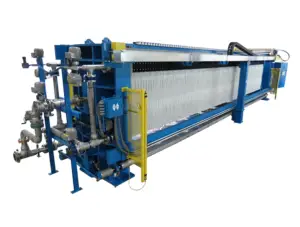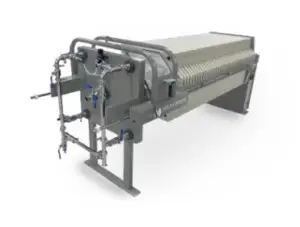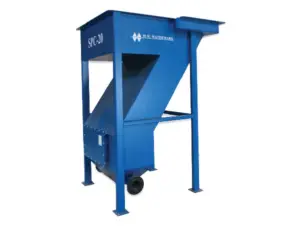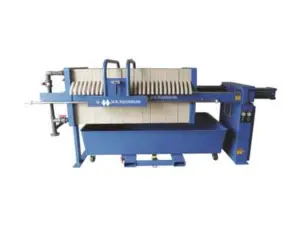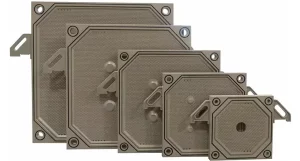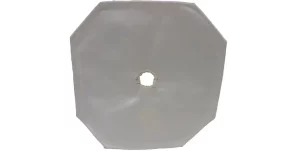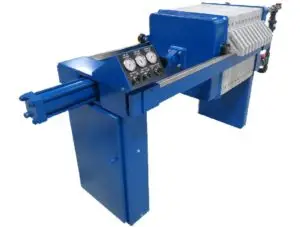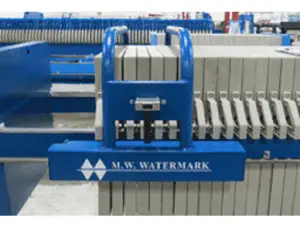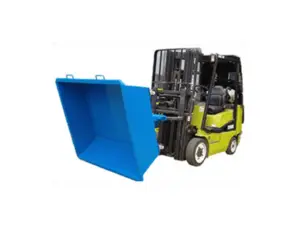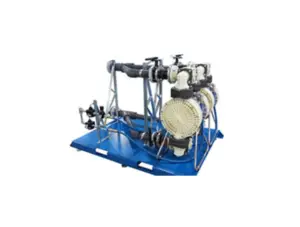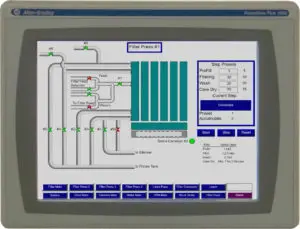The effectiveness of an industrial filter press is often judged based on the clarity of the liquid exiting the filter and how fast the liquid can be filtered. An ideal system filters a maximum amount of impurities while at the same time providing minimum restrictions on flow. Adding a precoat to filtration equipment can greatly improve the clarity of the output without sacrificing flow rate.
What is Filter Press Precoat?
Precoating is a pretreatment process where, prior to filtration, filter cloths are coated with a layer of porous, inert material. Common precoat materials are diatomaceous earth (DE), perlite, and cellulose. The viscosity of the liquid and the size of the impurities will determine how coarse or fine a precoat should be. The substance should be fine enough to aid filtration but not so fine as to be impassable.
For example, after being expanded via heat to create foam-like bubble structures, perlite is milled to produce various grades of material, each with specific flow characteristics. The resulting perlite particles have jagged, interlocking features, which form billions of microscopic channels to yield ideal flow and particle-capture rates across a variety of applications.
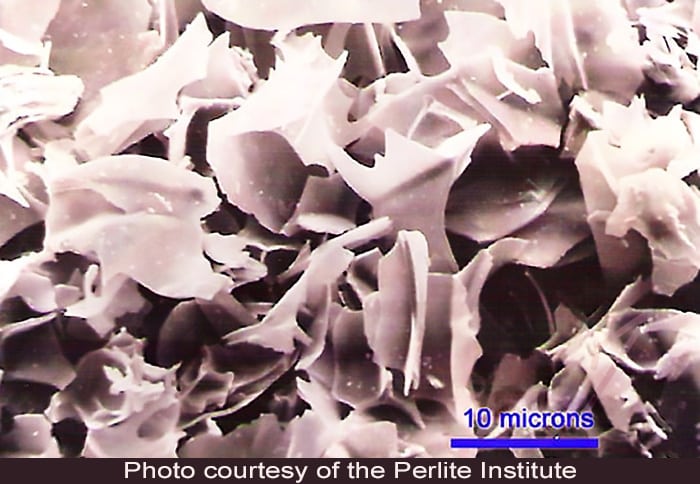
How Is Precoat Applied?
In most cases, the precoat application process starts by filling a designated “precoat tank” with water (or a “clean” volume of whatever liquid is being filtered) and the precoat material is mixed into this tank. As applicable, the valves isolating the bottom filtrate (effluent) lines should be closed to ensure all air has been expelled from the press when liquid returns to the precoat tank. The precoat solution is then pumped through the filter press and recirculated back to the precoat tank. As the solution continues to circulate, the precoat material forms a porous filter cake layer on the filter cloths. The precoat process is complete when the liquid in the precoat tank is once again clear. Slurry is then fed to the filter press, and the precoat layer serves as the filtering medium that traps the solids being removed.
How Does Precoat Benefit Filtration?
Aside from improving the clarity of the filtrate by adding an extra filtration layer, precoat significantly prolongs the life of filter cloths. Without a precoat, the impurities removed from the liquid can bind directly to the filter cloth material. This can blind or damage the filter cloths and may require cleaning or replacement sooner than without a precoat. Precoat material captures impurities and creates a cake that drops away cleanly from the filter cloth. An easier cake release can reduce the time required for filter cake discharge, thus increasing productivity.
For more info, see our video below.
M.W. Watermark® can recommend the best precoat option for your filter press application. Contact us to learn more.
About M.W. Watermark
M.W. WATERMARK wants to make a difference. We are passionate about the world’s water. We are innovative, focused on customer service and always try to exceed expectations. We are an environmentally conscious company with people who are energized, encouraged and inspired to make a difference on our planet by helping to keep our shared, finite water supply clean and usable for generations to come. We build amazing, custom water and wastewater treatment equipment. Together, we can make a difference.

